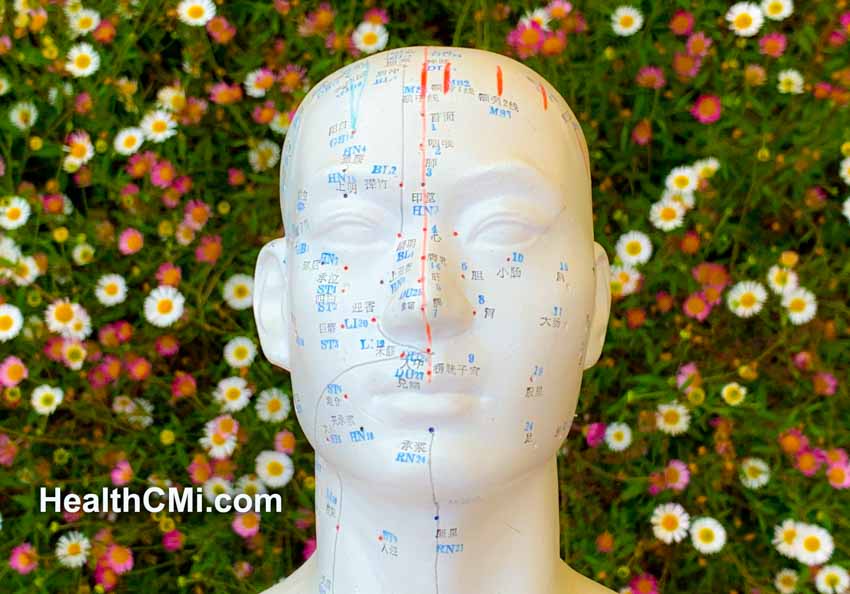
Electroacupuncture improves sleep for post-stroke patients. First Hospital Affiliated to Heilongjiang Hospital of Traditional Chinese Medicine researchers conducted a clinical trial comparing the effects of manual acupuncture and electroacupuncture. Results show that applying electrical stimulation to Shenmen (HT7) and Neiguan (PC6) more effectively improves sleep quality than manual stimulation for post-stroke patients. [1]
The total effective rate was calculated with a symptom scoring system. After the completion of all acupuncture treatments, six patients in the electroacupuncture group were deemed recovered. An additional twelve patients had a significant reduction of symptoms and improvement of sleep quality. Nine patients were considered moderately effective, and three patients did not show any improvements. These results yield a total effective rate of 90% for patients treated with electroacupuncture.
From April 2019 to January 2021, sixty post-stroke patients were admitted into the study. The patients were randomized into a manual acupuncture control group and an electroacupuncture group. There were no statistical distinctions between the patients in terms of age, gender, or disease course prior to treatments in this study. All patients met the criteria for insomnia, suffering from difficulty falling asleep, sleep maintenance disorder, waking early, poor quality, or limited duration. The patients presented daytime functional impairments including fatigue, reduced attention, mental irritability, and cognitive disorders.
Regular stroke medication was prescribed during the course of acupuncture to ensure the well-being of all patients. Acupuncture was administered for 40 minutes daily for six consecutive days, followed by a one-day break. Then, another six-day session was conducted.
For the manual control group, Huatuo Brand filiform needles (0.30 × 40 mm) were used. A reinforcing needling manipulation was used on Zhaohai, while a reducing needling manipulation was used on Shenmai. The acupoints for the procedure were:
- GV20 (Baihui)
- GV26 (Shuigou)
- KD6 (Zhaohai)
- BL62 (Shenmai)
- SP6 (Sanyinjiao)
- BL40 (Weizhong)
- Anmian
- HT1 (Jiquan)
- LU5 (Chize)
- HT7 (Shenmen)
- PC6 (Neiguan)
For the electroacupuncture group, electrical stimulation was added through an electroacupuncture device (Yingdi KWD808 model II). After manually inserting the needles, Neiguan points were connected to the positive electrode and Shenmen points were connected to the negative electrode, bilaterally. The sparse wave pattern was used for these treatments, and intensity was gradually increased to each patient’s tolerance level.
In this study, outcomes were measured using the Pittsburgh Sleep Quality Index (PSQI), Athens Insomnia Scale (AIS), and NIH Stroke Scale/Score (NIHSS). Both groups showed a decrease in all three indicators, with the electroacupuncture group experiencing a more marked decline. Before the trial, PSQI scores in the manual control group and electroacupuncture group were similar, 12.27 ±2.00 and 12.47 ±1.93 respectively. Following treatment, the scores dropped to 6.53 ±1.70 and 5. 53 ±1.96.
A similar pattern was demonstrated by AIS scores. The electroacupuncture group lowered from 19.10 ±1.73 to 9.10 ±1.84, while the control group lowered from 19.93 ±1.68 to 10.83 ±1.64. Prior to experiment, NIHSS scores were approximately 14.50 for both groups. After treatment, the electroacupuncture group was at 7.63 ±1.19, and the control group at 9. 43 ±1.28.
The results show that both manual acupuncture and electroacupuncture are effective for improving the quality of sleep for post-stroke patients, but the addition of electrical stimulation produces superior outcomes.
Reference:
Liu Yong, Chen Chenyou, Clinical Observation on Electro-Needling HT7 and PC6 in Treatment of Post-Stroke Insomnia, Information on Traditional Chinese Medicine, Vol. 38, No. 10, Oct. 2021.


